The Fishing Cat
All About The Fishing Cats: Habitat, Diet, and More
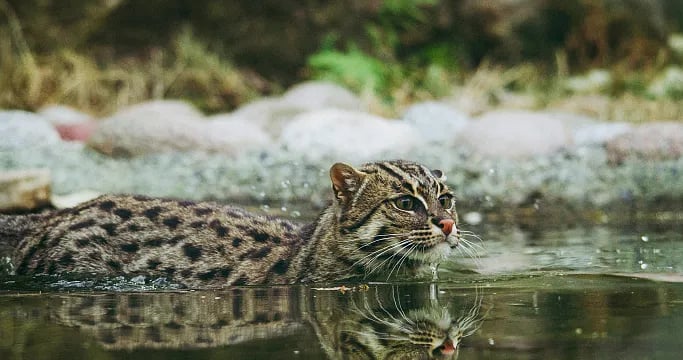

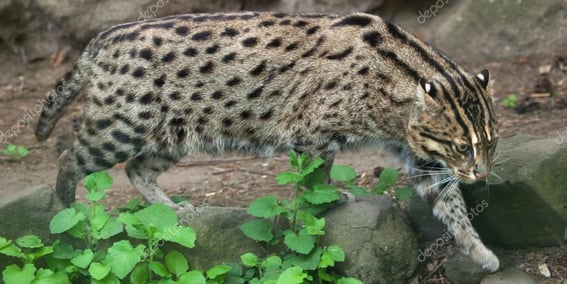

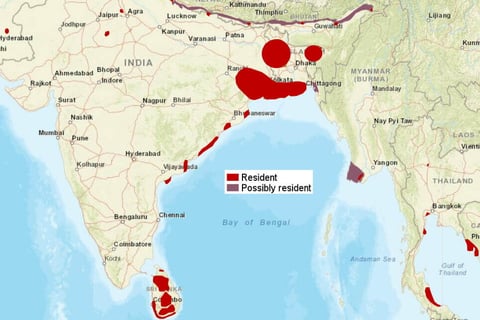

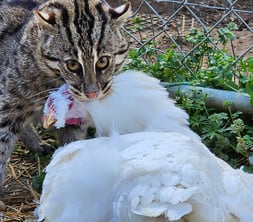

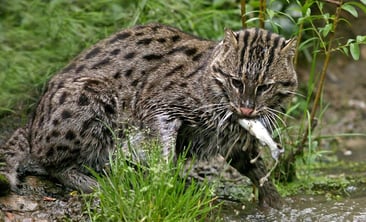

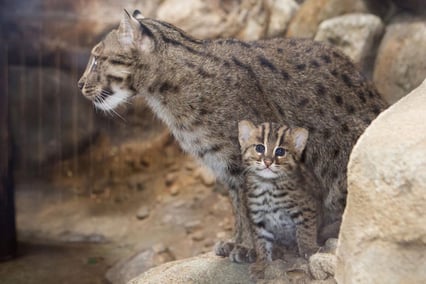

Photo courtesy of the Denver Zoo
Introduction
The fishing cat (Prionailurus viverrinus) is a unique and elusive feline found in South and Southeast Asia. Known for its exceptional fishing skills, this medium-sized wildcat has adapted to thrive in wetland habitats. In this blog post, we will explore the fascinating world of the fishing cat, covering its description, habitat, diet, reproduction, and conservation status.
Animal Description
The fishing cat is a robust, stocky wildcat with a muscular build, perfect for its semi-aquatic lifestyle. It has a distinctive appearance, characterized by:
Size: Adults typically weigh between 11-35 pounds and measure about 26-34 inches in length, with a short tail adding another 10-12 inches.
Coat: Its coat is coarse and grayish-brown with black spots and stripes. The spots are arranged in longitudinal rows, and the face has prominent white markings.
Webbed Feet: One of the most unique features is its partially webbed front feet, aiding in swimming and catching fish.
Habitat
Fishing cats are primarily found in wetlands, including mangrove swamps, marshes, rivers, and streams. They inhabit regions across:
South and Southeast Asia: Including India, Nepal, Bangladesh, Sri Lanka, Thailand, and Indonesia.
Wetland Ecosystems: They are highly dependent on bodies of water for their survival, often seen in areas with dense vegetation cover
Diet
True to their name, fishing cats eat fish, which constitutes a significant portion of their diet. However, they are opportunistic predators and also consume:
Aquatic Prey: Such as crustaceans, frogs, and mollusks.
Small Mammals and Birds: Occasionally hunting rodents, small deer, and ground-nesting birds.
Reproduction
Fishing cats have specific reproductive behaviors:
Breeding Season: Typically from January to February.
Gestation Period: Lasts about 63-70 days.
Litter Size: Usually, one to four kittens are born in each litter.
Parental Care: The mother raises the kittens alone, weaning them at around six months of age.
Conservation Status and Efforts
The fishing cat is classified as Vulnerable by the International Union for Conservation of Nature (IUCN) due to habitat destruction and declining populations. Major threats include:
Habitat Loss: Due to wetland drainage, agriculture, and urban development.
Human-Wildlife Conflict: Encounters with humans can lead to retaliatory killings.
Conservation Efforts
Efforts to protect the fishing cat are crucial for its survival:
Protected Areas: Establishing and maintaining protected wetland areas.
Awareness Campaigns: Educating local communities about the importance of wetland conservation.
Research and Monitoring: Conducting studies to understand their ecology and implement effective conservation strategies.
Conclusion
The fishing cat is an extraordinary example of nature's adaptability, thriving in habitats where water plays a crucial role. Protecting this remarkable species requires concerted efforts to preserve its wetland environment and mitigate human-wildlife conflicts.
References
IUCN Red List: Fishing Cat
Wildlife Conservation Society: Fishing Cat
By understanding and appreciating the fishing cat, we can contribute to its conservation and ensure this unique species continues to thrive in its natural habitat.
